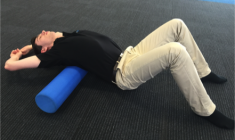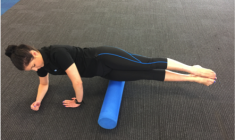How to Self Massage
There is no doubt that rolling on a foam roller isn’t the most pleasant experience. Fortunately though, a majority of the time you will jump up and feel a lot better for it. Why is this? Why do those few minutes of self torture work wonders for relieving pain and stiffness? Why should your foam roller be your best friend.
Rolling before exercise?
By rolling before exercise you can eliminate some tightness and tension in muscles, which will help improve joint range of movement required for your activity and hence aid technique and performance. This will inherently reduce the risk of injury and reduce post exercise muscle soreness.
Rolling after exercise?
It is common knowledge that exercise results in a build up of lactic acid and deep ‘knots’ in our muscles, which can be pretty uncomfortable. Deep compression on your muscles from a foam roller can help to work out these knots. Muscles should be fairly soft to the touch, and can tighten up during the course of a regular exercise regimen, which means that blood is not adequately flowing to these areas. By rolling through these areas, normal blood flow will be restored, meaning that the body is able to clear out the lactic acid from as part of its normal recovery process. Just think, you bought a big rump steak for dinner and to make sure it’s nice and tender, you hit it with a meat tenderiser – it’s the same for your muscles, albeit a little less aggressive. Below are some examples of commonly used foam rolling techniques.
College Physiotherapists







